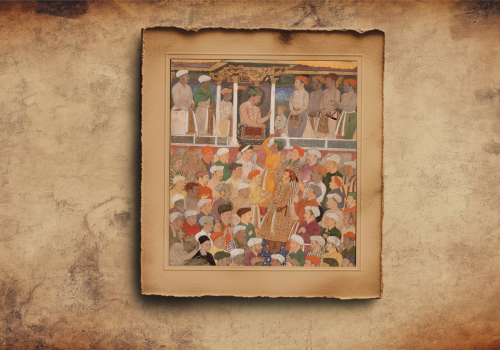GOBINDGARH FORT, raised in the lime of Maharaja Ranjit Singh on the ruins of an old fortress built at Amritsar by Gujjar Singh (d. 1788) of the Bharigi clan, was named in honour of Guru Gobind Singh. The Fort took four years, 1805-09, to build. According to Lepel Griffin, Shamir Singh Thethar (d. 1824), one of the army commanders, was entrusted by Maharaja Ranjit Singh with the task of building the Fort. He was also appointed its first qiladar (commandant).The Fort, an imposing structure with a gilded dome, was surrounded by a high wall. It had eight towers.
The moat around it was lined with bricks. The huge wooden door on the eastern side marked the main entrance. The Fort contained magazines, arsenals and royal stables, besides a mint. Imam ud Din, one of the renowned three Faqir brothers of Sikh times, remained in charge of the Fort for many years. The Fort also served as the State treasury. Here were kept the crown jewels as well as the Maharaja`s gold and silver. Political prisoners were sent here for detention. The Fort retained its importance under the British and is at present used by the Indian defence forces.
References:
1. Suri, Sohan Lal, `Umddt-ul-Tuidnkh. Lahore, 1885-89
2. Sinyth, G. Carmichael, A History of the Reigning Family of LaAom Paliala, 1970
3. Harbans Singh, The Heritage of l.lie Sikhs. Delhi, 1983
More Information
The Gobindgarh Fort –the very symbol of Punjab, the iconic protector of Amritsar is situated right in the center of the Holy City along the Grand Trunk road spanning across 43 acres of land. This magnificent heritage site has a history of its own, spread across a period of over 300 years, right from the times of the Bhangi Misl-Maharaja Ranjit Singh-The East India Company-the Indian Army. This qilla has finally opened its gates for the very first to welcome not only the people of Punjab but also each one of those devotees and tourists that come here to pay their respects to Shri Harmandir Sahib. At one time the world famous Kohinoor diamond was housed within the fort. The qilla is now being restored in a phased manner to hopefully revive it back to its past glory to the times of the Maharaja. Here within the fort are several different buildings, built across the span of time, some during the Maharaja’s reign, such as the Toshakhana, Khas Mahal, Bastions, Moat, Wells, Haveli etc, some during the East India Company such as the Darbar Hall. Some existing structures were altered during the British times and others partially added such as the Anglo Sikh Bunglow. Here there is a bell of 1863 made in Sheffield, UK, which was made in order to cast other bells at that time.







